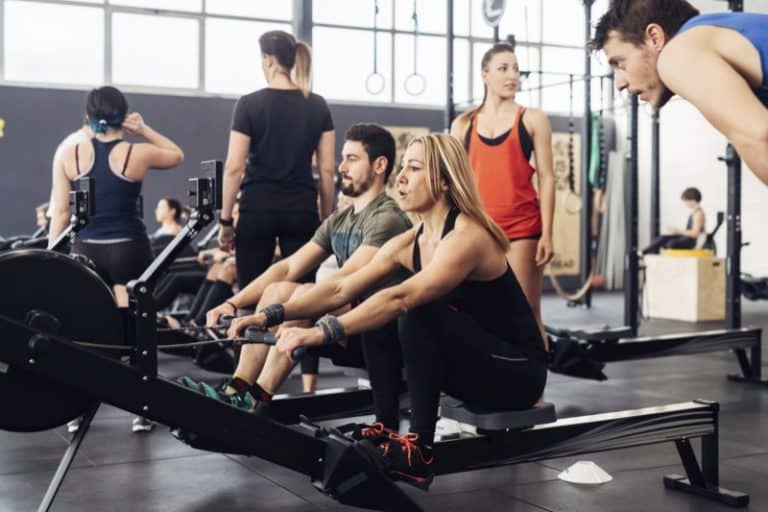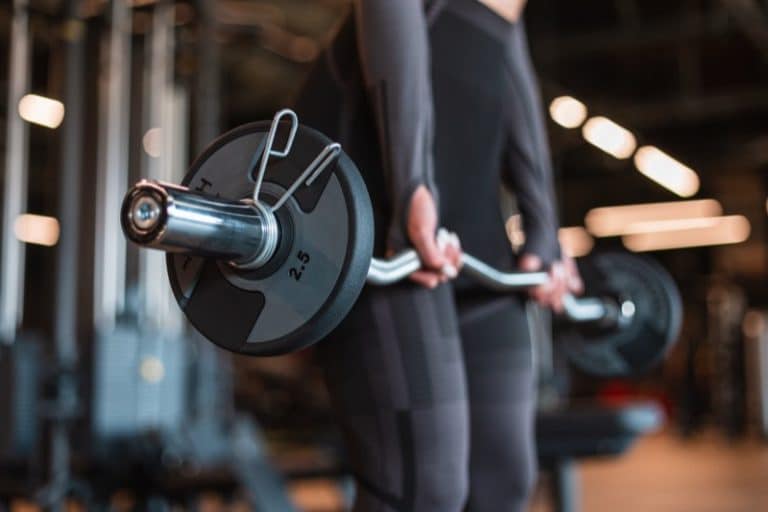HIIT Workout Plan: High Intensity Exercise Routine
High-Intensity Interval Training (HIIT) has become an incredibly popular choice for those looking to maximize their workout efficiency. Whether you’re new to HIIT or a seasoned participant, this workout plan is designed to push your limits and achieve great results in a short amount of time. By alternating between bursts of intense exercise and periods of rest, HIIT workouts can help you burn fat, build muscle, and improve cardiovascular fitness faster than traditional exercise routines.
Introduction to HIIT
HIIT, or High-Intensity Interval Training, is a form of exercise that combines short bursts of intense physical activity with shorter recovery periods. This type of workout is known for its ability to rapidly increase heart rate, providing significant cardiovascular benefits. With HIIT, you can achieve substantial fitness improvements without spending hours at the gym. The goal of HIIT is to push your body to its limits in less time, making it an ideal workout routine for those with busy schedules.
What is HIIT?
HIIT is a workout strategy that involves cycles of high-intensity exercise followed by rest or active recovery periods. This pattern is repeated multiple times, allowing for a comprehensive workout in a short amount of time. HIIT is versatile and can include a variety of exercises.
| Activity | Duration |
|---|---|
| Intense Activity (e.g., sprinting on a treadmill or stationary bike) | 30 seconds |
| Rest | 10 seconds |
Exercises in a HIIT session can include cardio workouts, weight training, or even bodyweight exercises.
Benefits of HIIT Workouts
The benefits of HIIT workouts are numerous and well-documented. A significant advantage is the ability to burn fat and build muscle simultaneously. The high-intensity nature of the workout increases calorie burn during and after the session, enhancing fat loss. Additionally, HIIT is known to improve your VO2 max, which is a measure of cardiovascular endurance. These workouts also boost metabolic rate, allowing you to continue burning calories long after the session has ended. Moreover, HIIT training can be tailored to any fitness level, making it accessible for beginners and experienced athletes alike.
Overview of High-Intensity Interval Training
High-Intensity Interval Training is characterized by its intense bursts of activity, which are alternated with rest periods to allow for recovery. This approach not only helps in building cardiovascular fitness but also decreases the risk of injury when proper form is maintained. HIIT can be performed using various types of exercises, from traditional cardio workouts to strength training moves like lifting weights. By engaging in different HIIT workouts, you can keep your routine interesting and target various muscle groups, ensuring a full-body workout. Whether at the gym or at home, incorporating HIIT into your fitness plan promises a high return on investment in terms of health benefits.
Getting Started with HIIT
Beginner HIIT Workout Plans
For those new to high-intensity interval training, starting with a beginner HIIT workout plan can help ease the transition into this intense yet rewarding exercise routine. The key is to begin with manageable intervals and gradually increase the intensity and duration as your fitness level improves. A typical beginner HIIT session might involve 30 seconds of moderate-intensity exercises followed by 30 seconds of rest periods. These workouts can include a mix of cardio exercises, such as brisk walking or cycling on a stationary bike, and strength training moves like bodyweight squats or lunges. Over time, this approach helps to build muscle, burn fat, and improve cardiovascular fitness.
How to Get Started with HIIT
Embarking on a HIIT journey requires some preparation to ensure safety and effectiveness. First, consult with a healthcare provider if you have any pre-existing conditions that might be affected by high-intensity exercise. Once cleared, choose a workout plan that aligns with your current fitness level. Start with low-impact exercises to minimize the risk of injury and focus on maintaining proper form throughout each session. Incorporate a mix of cardio workouts and strength training to target different muscle groups. A simple HIIT workout might include sprints on a treadmill, followed by lifting weights with short recovery periods. Gradually increase the intensity as your endurance improves.
Types of HIIT Workouts
There are various types of HIIT workouts, each offering unique benefits and catering to different preferences. Cardio-focused HIIT sessions often involve exercises like cycling, running, or jumping jacks, emphasizing cardiovascular fitness and helping to get your heart rate up quickly. Meanwhile, strength-based HIIT workouts incorporate weight training exercises that target muscle mass, such as deadlifts or push-ups. Some HIIT routines blend both cardio and strength elements, providing a comprehensive workout in less time. Whether at the gym or at home, the flexibility of HIIT means you can tailor your workouts to suit your goals, whether to burn fat, increase endurance, or build muscle.
HIIT Workout Routine
Sample HIIT Workout Plan
Creating an effective HIIT workout plan involves balancing intensity with recovery to maximize benefits. A typical HIIT session might start with a warm-up, followed by cycles of intense exercise, each lasting around 30 seconds, interspersed with shorter recovery periods.
| Exercise | Duration |
|---|---|
| Sprint on a treadmill | 30 seconds |
| Walk (rest) | 10 seconds |
This pattern is repeated multiple times to ensure a comprehensive workout. The versatility of HIIT allows for the incorporation of various exercises, including cardio activities and strength training, to build muscle while simultaneously improving cardiovascular fitness.
3 HIIT Workouts to Try
For those looking to diversify their routine, here are three HIIT workouts to try.
| Workout | Description |
|---|---|
| Tabata | 20 seconds of intense exercise followed by 10 seconds of rest, repeated for four minutes. |
| Bodyweight Circuit | Combines exercises like burpees, squats, and push-ups, each performed for 30 seconds with 15-second rest periods. |
| Treadmill Session | Alternates between high-speed sprints and slow-paced walking. |
These workouts can be adapted to various fitness levels and goals, whether you aim to burn fat, increase endurance, or build muscular strength.
High-Intensity Interval Training Techniques
Mastering high-intensity interval training techniques is essential for maximizing workout efficiency and minimizing the risk of injury. Proper form is crucial in HIIT to ensure that each exercise is executed safely and effectively. Incorporate a mix of cardio workouts and weight training to target different muscle groups, enhancing both strength and cardiovascular fitness. Focus on increasing your heart rate quickly during intense bursts while using recovery periods to catch your breath and prepare for the next round. By experimenting with different HIIT workouts and adjusting intensity levels, you can tailor your routine to meet specific fitness goals and preferences.
Maximizing Results with HIIT
How HIIT Can Help with Fat Loss
High-Intensity Interval Training (HIIT) is a powerful tool in the quest to burn fat effectively. The intense exercise bursts inherent in HIIT workouts significantly elevate your heart rate, which leads to an increased calorie burn compared to traditional moderate-intensity exercise. This process is not only effective during the workout but continues to burn calories in the recovery periods post-exercise, a phenomenon known as the afterburn effect. By incorporating HIIT into your routine, you can reduce body fat in a short amount of time while simultaneously improving cardiovascular fitness.
Building Muscle with High-Intensity Workouts
HIIT workouts are not just about burning fat; they are also a fantastic way to build muscle. The combination of high-intensity cardio and strength training exercises, such as lifting weights, helps in gaining muscle mass. During a HIIT session, exercises are performed at maximum effort for about 30 seconds, followed by a brief rest period. This strategy helps in recruiting more muscle fibers, leading to increased muscle strength and endurance. By integrating various types of HIIT workouts, you can target different muscle groups, promoting a balanced increase in muscle mass.
Monitoring Your Heart Rate During HIIT
Keeping track of your heart rate during HIIT workouts is crucial for maximizing benefits and minimizing the risk of injury. Monitoring helps ensure that you are pushing yourself to the appropriate intensity level, which is essential for achieving cardiovascular benefits. Ideal heart rate zones vary depending on individual fitness levels but generally should reach 70-90% of your maximum heart rate during intense exercise bursts. Tools like heart rate monitors or fitness trackers can provide real-time feedback, allowing you to adjust your effort during each HIIT session to ensure you’re meeting your fitness goals safely.
Conclusion
Recap of HIIT Benefits
In summary, the benefits of HIIT are vast and impactful, offering an efficient way to enhance fitness levels in less time. HIIT workouts can burn fat and build muscle, improve cardiovascular health, and increase endurance through high-intensity intervals. The variety of exercises available keeps the routine engaging and adaptable to individual goals. Whether you’re using a treadmill, stationary bike, or engaging in strength training, HIIT provides a comprehensive workout plan that meets diverse fitness aspirations while delivering significant health benefits.
Encouragement to Try HIIT
If you’re new to HIIT or seeking to revitalize your current exercise routine, incorporating high-intensity interval training could be the solution you need. With its ability to deliver results quickly and efficiently, HIIT is ideal for anyone looking to achieve fitness goals without spending extensive hours at the gym. The flexibility of HIIT allows for customization according to personal preferences and fitness levels, making it accessible to everyone. By trying HIIT, you can experience the transformative power of this high-intensity workout and reap its long-term health benefits.
Final Thoughts on Your HIIT Journey
Embarking on a HIIT journey is a commitment to personal growth and health improvement. As you integrate different HIIT workouts into your routine, remember to focus on proper form and listen to your body to prevent injury. The journey might begin with a beginner HIIT workout, but as your endurance and strength improve, you can gradually increase intensity and complexity. Celebrate each milestone achieved, whether it’s enhanced cardiovascular fitness, reduced body fat, or increased muscle mass. Your dedication to HIIT will pave the way for a healthier, more active lifestyle.

Unlock your fitness potential with Trainero! Get a 14-day free trial and access personalized workout plans, expert coaching, and progress tracking—all in one app. No commitments, just results. Start your free trial today and take your fitness journey to the next level!











